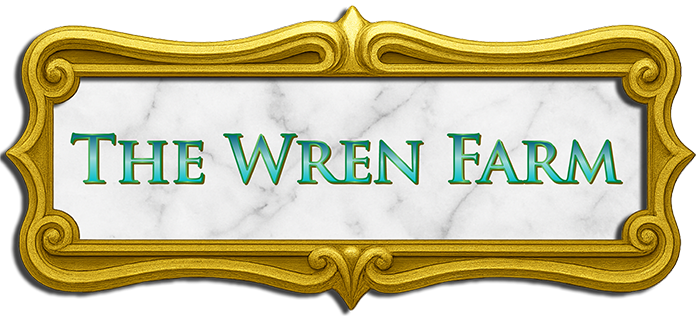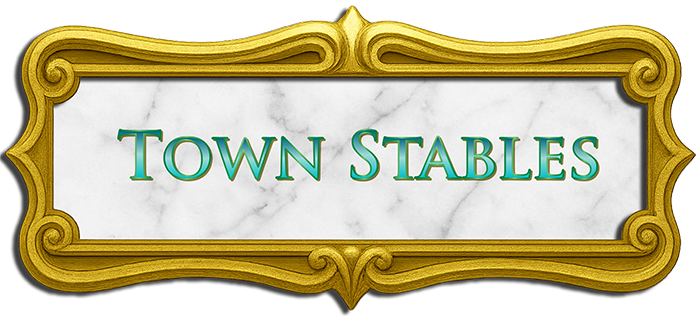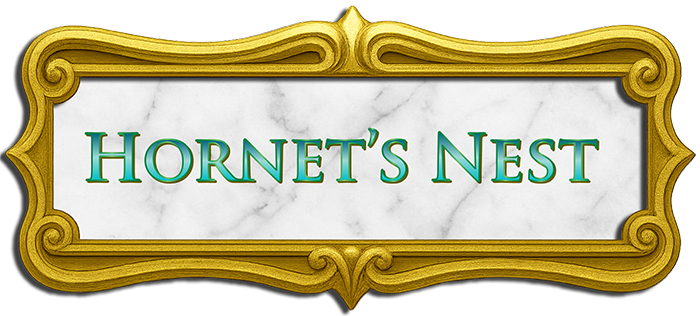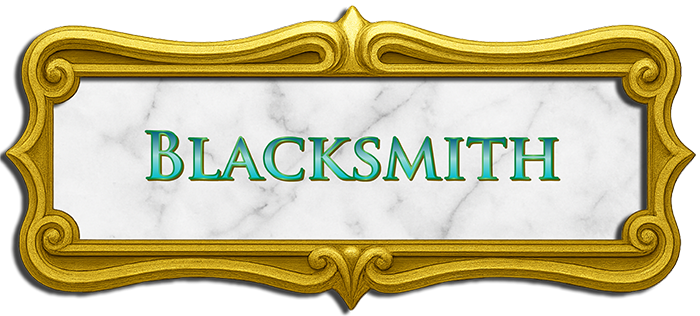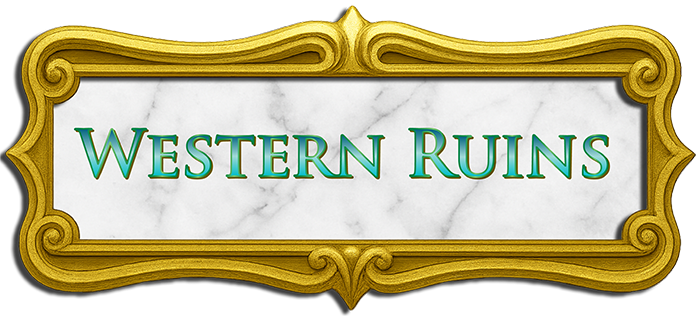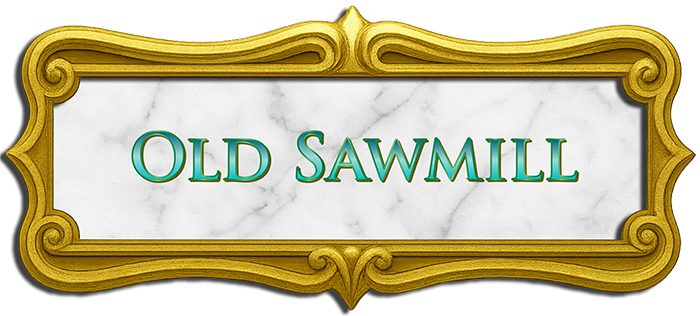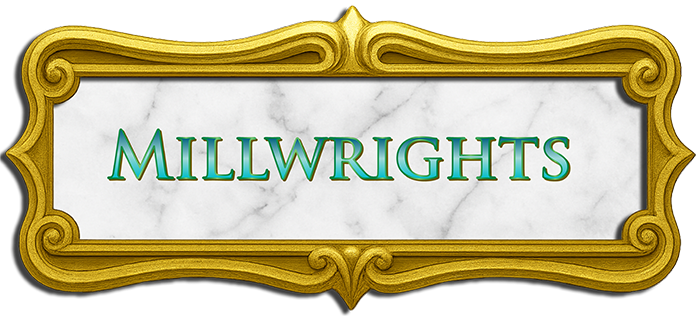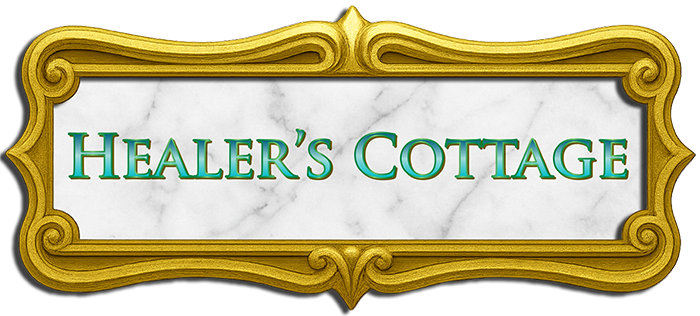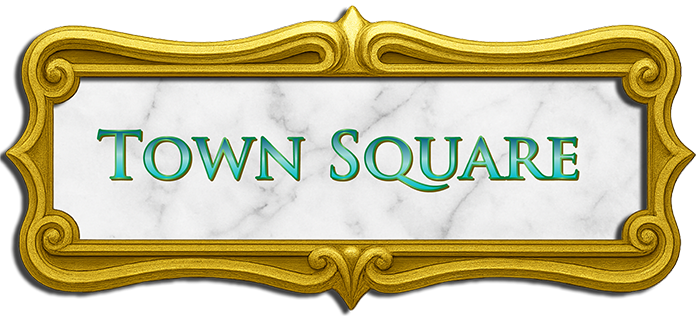If you don’t already have it, please pick up a copy of the Knightmare novel here:
Summervale is a quiet farming village nestled in a broad eastern valley, surrounded by wooded slopes, shallow hills, and the distant hush of forested ridges. Built near a reliable natural spring and anchored by its central well, the village grew slowly but steadily over time with a population of a little less than 200 people, shaped more by necessity than ambition.
Its roads are dirt-packed and well-worn, framed by low stone walls, creaky wooden fences, and the occasional leaning post. Houses are modest, mostly timber-framed and weathered by years of snow, rain, and smoke. Wind chimes and wash lines are more common than lanterns or sigils, and gardens outnumber guards.
The town is ringed by farmland, some still active, some scarred by past events. The Wren Farm occupies one of the oldest and most productive plots near the western edge, with a modest house, stables, and the partially burned remains of a cabin nearby. It’s a haunting reminder of past tragedy.
At the town’s core, the market crossroads, general store, blacksmith, and Hornet’s Nest Tavern serve as social and supply hubs. The healer’s cottage, tucked near a row of older homes, carries the scent of dried herbs and pine, always quietly open for those in need. East of town, near the river bend, sits the carpenter’s shop and sawmill, surrounded by lumber stacks, chickens, and sibling arguments that echo through the day.
Though Summervale lacks formal walls, it holds a different kind of protection, it’s community. The people here are woven into one another’s lives through history, hardship, and quiet resilience. They trade as much in reputation as in coin, and they remember both favors and failures for generations.
Before the darkness spread, Summervale was a place of second chances. A village where names could be redeemed, bonds reforged, and wounds, physical and otherwise are slowly mended.
🛠 Creator’s Note:
Summervale was originally created as the opening setting for a visual novel, and every corner of the town was designed with scene-building in mind. From taverns to trails, farms to healer huts, Summervale received the most visual and narrative detail of any location in the Knightmare world.
Even after the project evolved into a full-blown fantasy novel, this town remained the emotional and narrative heart of the story. That’s why this page contains more artwork, locations, and interactive detail than any other. It’s not just the first place readers visit, it’s the one they’ll never forget.
Welcome to the Neighborhood.
Town Stables

Type: Public Stables and Draft Animal Facility
Location: Eastern road near town’s edge, just past the market line
Description:
The Summervale Town Stables sit near the outskirts of the village proper, built large enough to support the seasonal demands of farming, trade, and travel. Constructed from heavy timber with wide-stretching paddocks behind the main barn, the stable grounds are always busy with the sounds of hoofbeats, brushing, and the occasional burst of laughter from stablehands.
The stables are run by Harold and Beverly, a no-nonsense couple who’ve been the keepers of Summervale’s workhorses and draft stock for decades. Harold handles the animals with quiet expertise, while Beverly runs the books and keeps things moving behind the scenes. Most villagers know to keep on their good side and not to return borrowed animals late.
Stellan and Thalia stop here early in Chapter 2 to return a draft horse borrowed for plowing. The scene is filled with practical small-town banter, tension lingering from Corren’s outbursts, and just a hint of Summervale’s lived-in warmth. Like much of the village, the stables feel humble, hardworking, and deeply rooted in the routines of the people who rely on them.
Blacksmith Shop
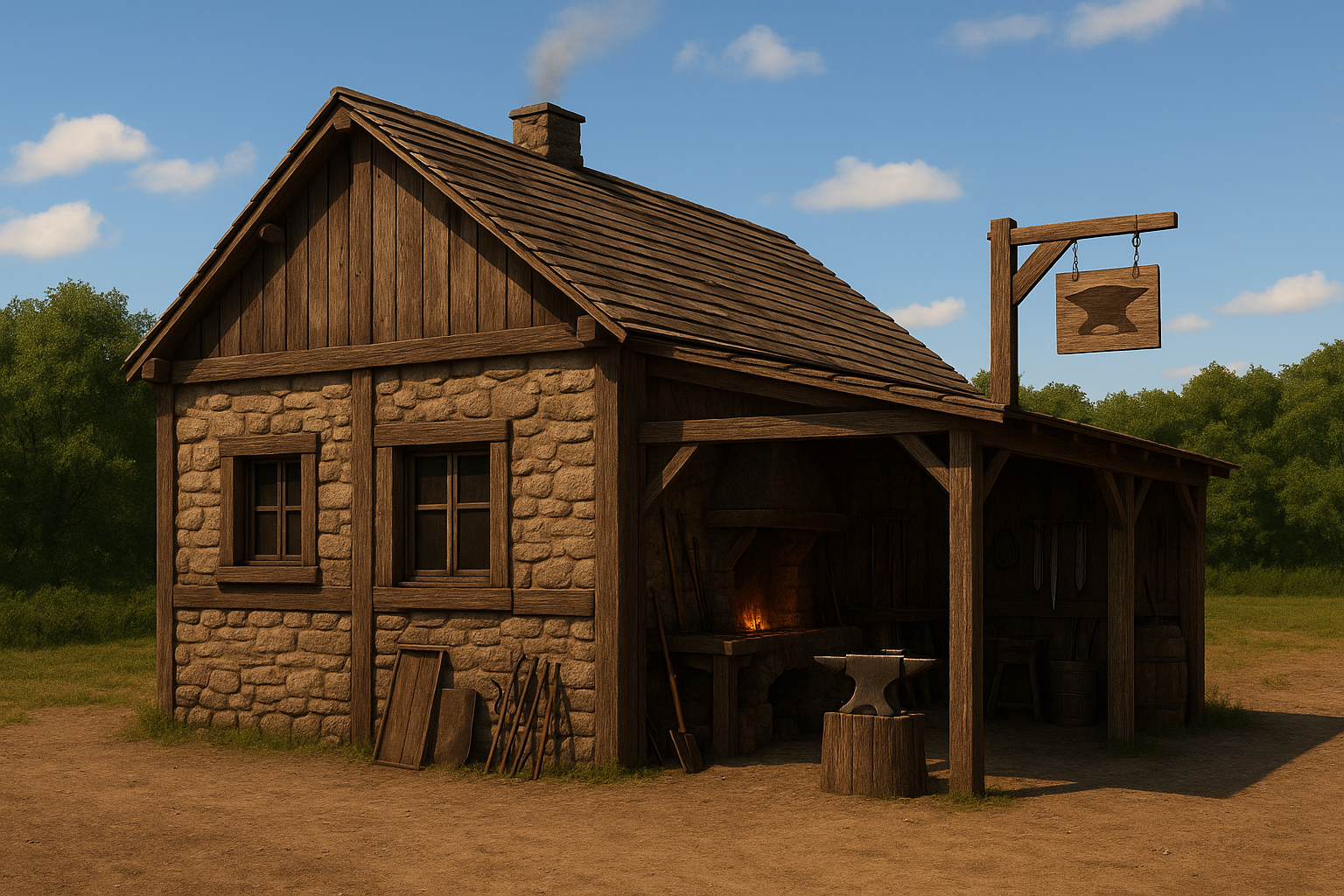
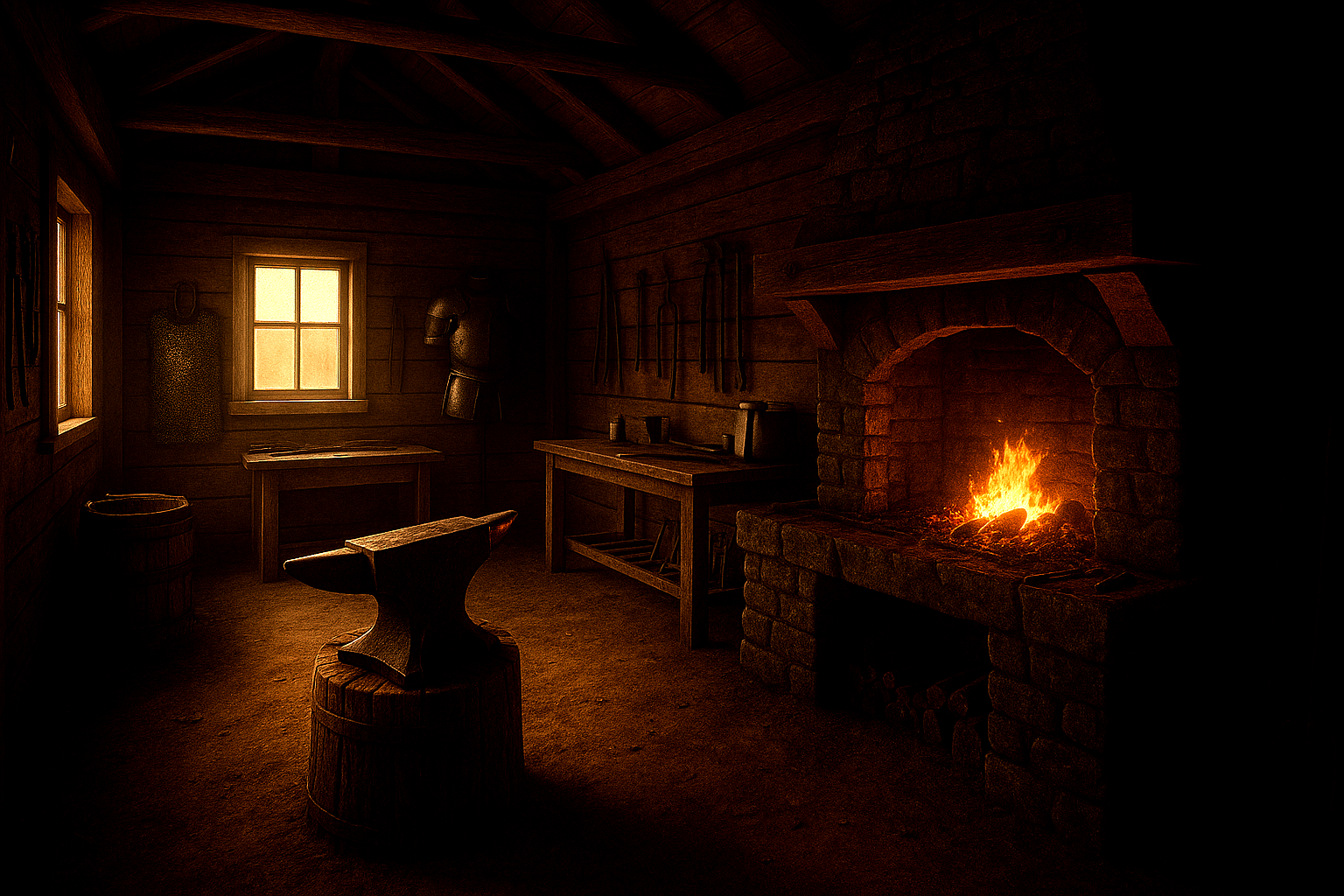
Type: Artisan Forge and Armory
Location: A street over from main street and next door to the Hornet's Nest
Description:
The Summervale blacksmith shop is a sturdy, stone-and-timber structure with the anvil symbol hanging proudly above its porch. The forge itself burns nearly nonstop, with one working station at the front for quick fittings and another tucked around back for heavier work. The outer yard smells of iron, ash, and old pine, while the interior glows with a deep amber firelight that flickers against tools, chainmail, and partially finished plate.
The forge is maintained by Halric and his wife Tilda, both of whom take quiet pride in their craftsmanship. Halric handles large orders, wagon repair, and horseshoes. Tilda specializes in blades, fittings, and light armor, though her real skill lies in precision work. The pair say little, but there’s a deep trust from the townsfolk that whatever they forge will hold up when it matters.
In Chapter 2, Stellan visits the shop to retrieve his freshly fitted armor. What should be a simple errand becomes a moment of quiet tension and reassurance, as he exchanges words with both smiths. The blacksmith shop may be modest in size, but it carries the weight of trust, preparation, and the unspoken readiness Summervale depends on in difficult times.
Western Ruins
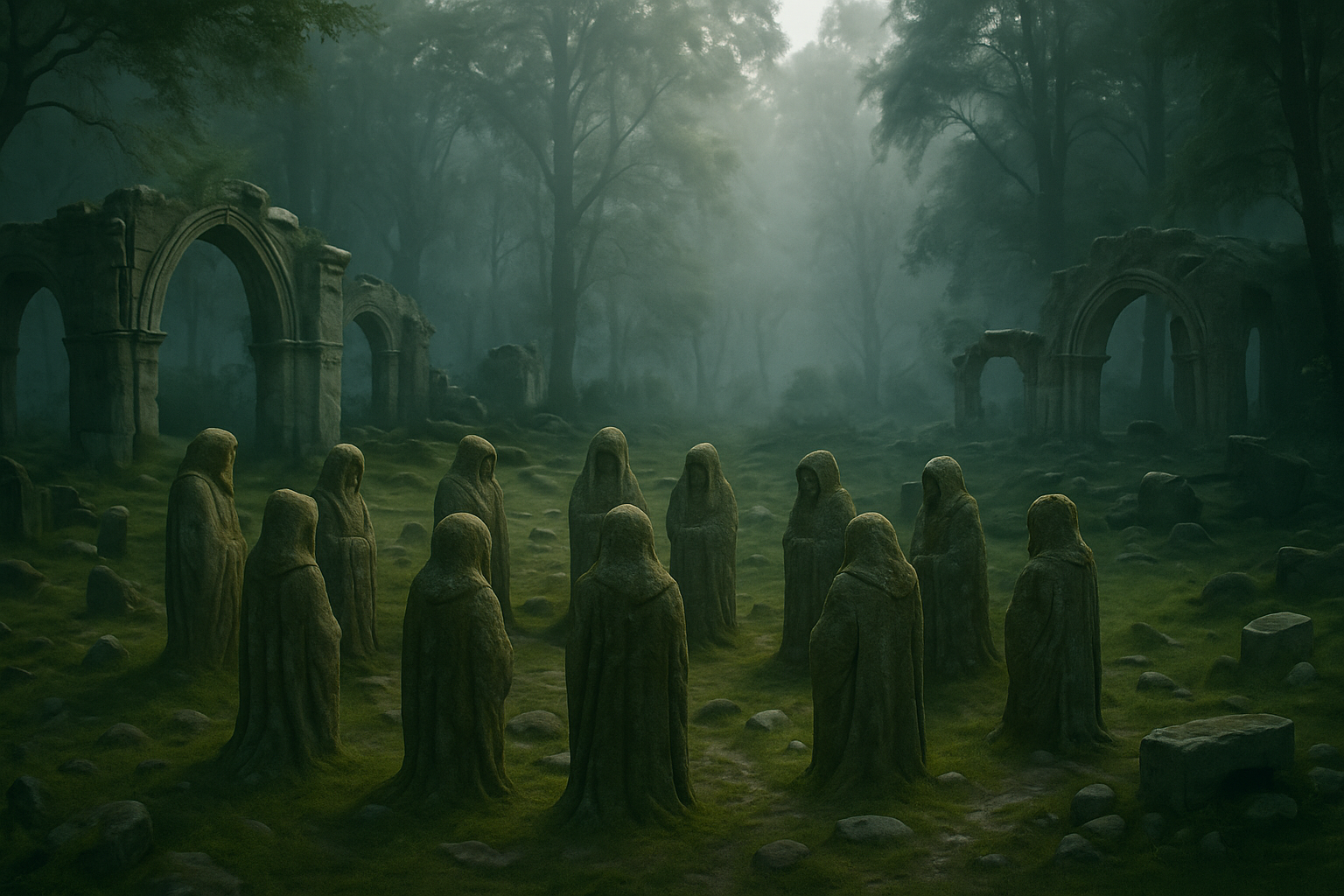
Type: Forgotten Ritual Site
Location: Edge of the Western Forest, beyond the old trail markers
Description:
Just past the worn trail where moss overtakes the stone, the forest opens into a hushed clearing. Here, twelve cloaked figures stand frozen in a silent circle, statues carved so long ago their faces have worn away. The ground is soft with moss and scattered bone-gray stones, and half-buried archways loom like forgotten gateways to some older age. No one in town remembers who carved the statues, or why they face inward.
Some believe this grove was a kind of outer sanctuary, a place of watching or warding. Others claim the statues were witnesses to something meant to be hidden. Elder Rynn refers to them only once in Chapter 3, calling them “sentinels” and cautioning Stellan not to linger there after dark. Whatever their purpose, the air is heavy with absence, like something is missing... or waiting to return.
This circle lies west of the altar ring shown on the map, deeper in the ruins but still part of the same ancient site. Time and forest growth may have split the space in two, but the mood here is unmistakable. The land still remembers. And not all wounds are healed with time.
Novel Insight: The Western Ruins mark the first subtle connection between the Blight and the town of Summervale. Observant readers may notice clues in this area that hint at the true origins of the corruption and Mara Wren’s long-avoided past.
Old Sawmill
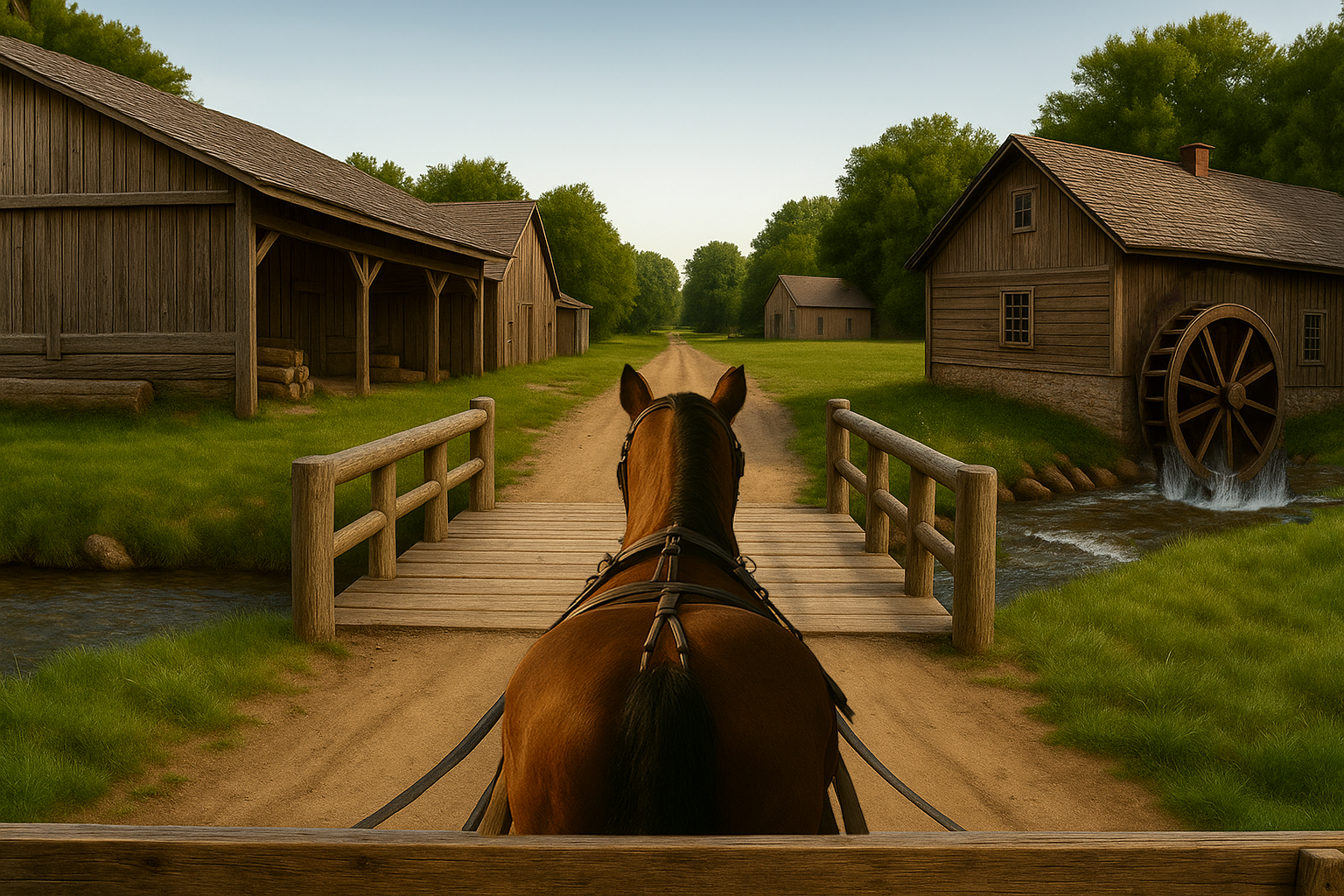
Description:
One of the first buildings raised in Summervale, the old sawmill still stands beside the flowing river where the current drives a weathered paddlewheel. Though the structure shows its age, timbers darkened by sun and rain, gears worn smooth from decades of use, it remains a quiet workhorse in the background of village life.
The mill is designed for modest tasks: cutting flooring, plank stock, and medium-width boards rather than full timber. It operates in tandem with the millwright shop just across the lane, which handles the shaping, finishing, and fitting of whatever passes through the blades. Most days the saw sits idle, only spinning when Kelrow or one of his farmhands makes a delivery from the outlying groves.
As Stellan and Thalia pass by on their wagon ride into town, the sawmill looms as a quiet reminder of the town’s founding, not abandoned, just subdued, like much of Summervale itself. Time hasn’t forgotten it, but it no longer moves with urgency.
Game Insight: Though not an interactive location, the sawmill subtly reinforces the rural setting and underscores Summervale’s reliance on practical crafts over heavy industry or trade. It also hints at how tightly the village ecosystem is woven, farmer, sawmill, millwright, and artisan all tied together.
Old Sawmill

Type: Water-Powered Lumber Mill
Location: South edge of Summervale, just past the main bridge
Description:
Nestled at the edge of town beside the flowing river, the old sawmill was one of the first buildings raised when Summervale was founded. Its broad timbered frame shows the wear of decades, with sun-bleached siding and a paddlewheel that still turns slow and steady in the current. Though no longer a central hub of town life, the sawmill remains functional—quietly humming to life a few days each month when wood is delivered by Kelrow or his farmhands from the nearby groves.
The mill was never meant for full-scale logging. Its purpose has always been modest: cutting flooring planks, basic siding, and rough beams for homesteads and repairs. The finer work is handled across the road at the carpenter’s and millwright’s shop, where the boards are shaped and fitted for their final purpose. The two buildings, weathered twins in quiet cooperation, still echo the rhythm of a village built by hand.
In Chapter 3, Stellan and Thalia cross the bridge on their way into town, the creak of the wagon mingling with the low churn of the paddlewheel. The sawmill stands there still—sturdy, dependable, and fading quietly into the background of a town that has grown up around it.
Millwright Shop

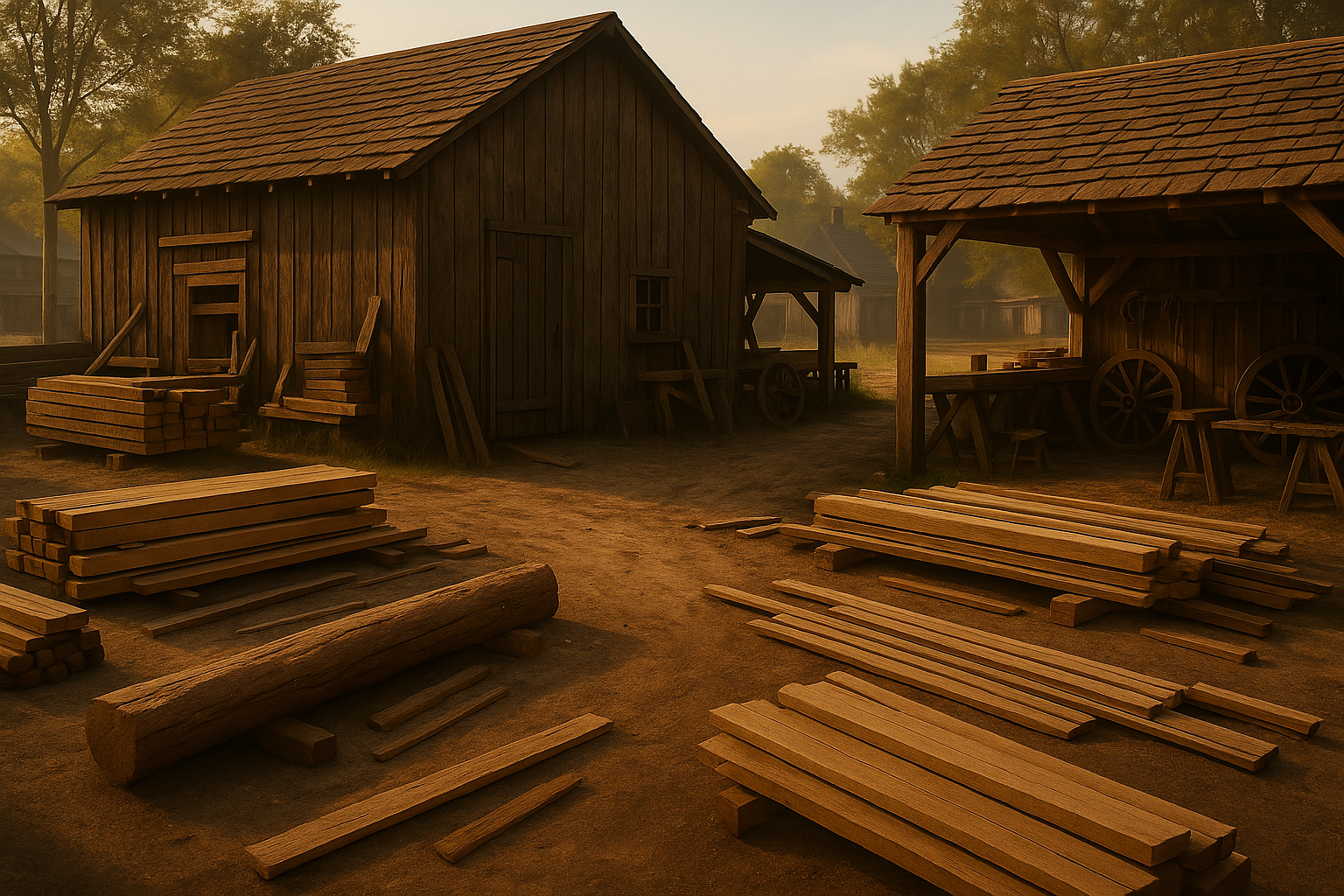
Type: Carpentry and Finish Mill Shop
Location: Opposite the Sawmill, just over the main bridge into town
Description:
The Millwright Shop sits directly across from Summervale’s aging sawmill, forming the second half of a quiet partnership that built much of the village by hand. While the sawmill cuts rough boards and beams, the Rigg brothers handle the fine work, planing, measuring, shaping, and fitting everything from floorboards to window frames. Half workshop, half lumberyard, the shop sprawls out like a woodcutter’s sketchbook brought to life: organized chaos with sawdust in every corner.
The business is co-owned and perpetually argued over by **Tarn and Bellis Rigg**, half-brothers born of the same father and two very different temperaments. Tarn handles customer relations with flair and sarcasm, while Bellis favors silence, scowls, and precision work. Their father left them the shop hoping it would bring them together. Instead, it created a decades-long bickering partnership that somehow still produces excellent lumberwork.
The shop’s outer yard reflects its purpose: stacked planks, sawhorses, half-loaded carts, and dirt paths worn from years of practical use. Despite their endless squabbling, the Rigg brothers are deeply embedded in Summervale’s routine. Every home, every floorboard, every cart rail probably bears the marks of their work, some straight, some stubborn, and all of it built to last.
Novel Insight: In Chapter 3, Thalia and Stellan stop here to retrieve a shipment of floorboards, though “retrieve” might be generous. Corren, in typical fashion, refused to pay for delivery, sending the pair in his stead with a satchel of nails and a sack of eggs as barter. Inside, the brothers argue over inventory, plank knots, and cheese quality while Thalia negotiates with the kind of patience only someone raised by Mara Wren could muster.
Healer’s Cottage
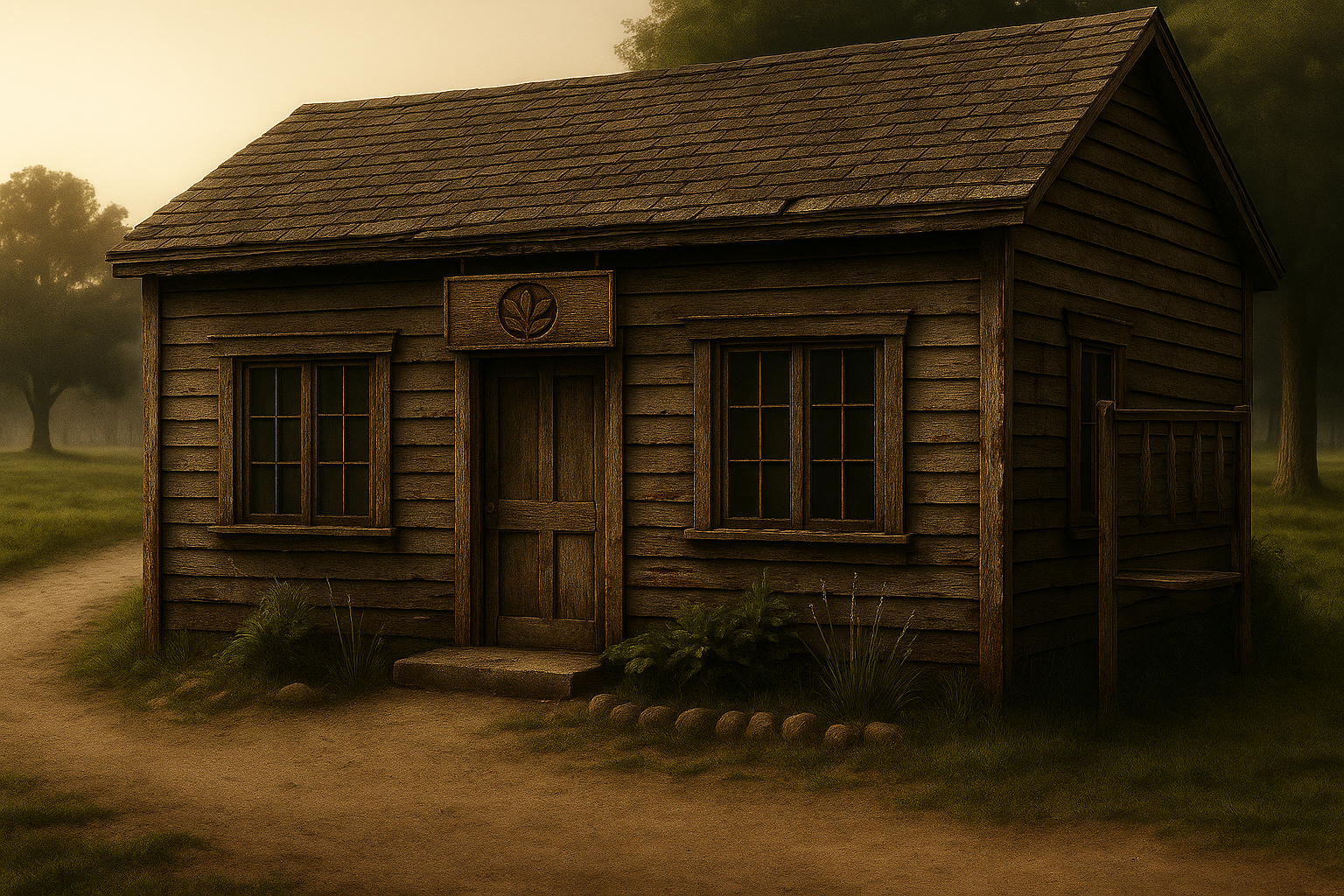
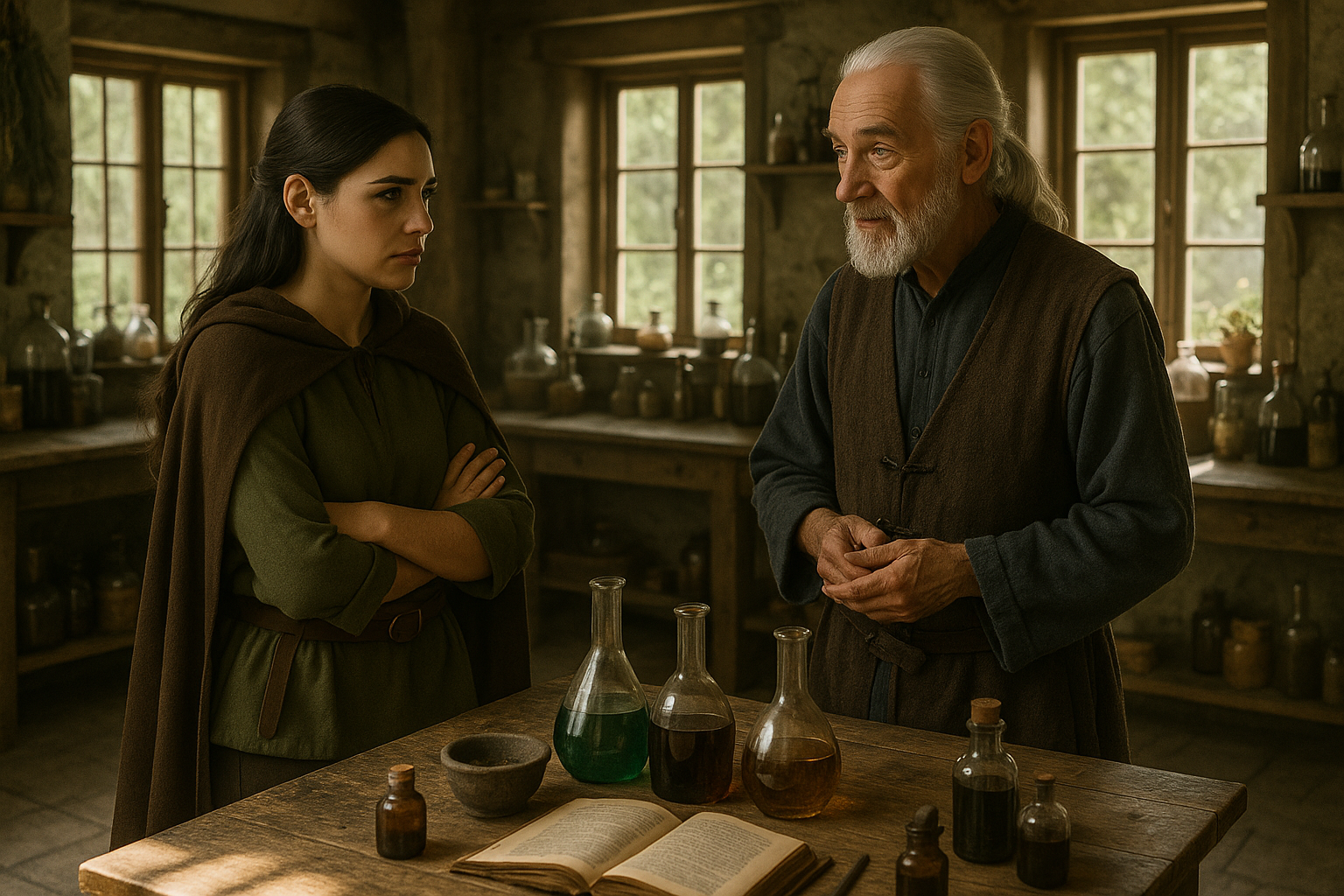
Type: Town Apothecary and Recovery House
Location: Just south of the square, near the Town Hall
Description:
Tucked beneath tall trees and surrounded by soft grasses, the Healer’s Cottage is more than a clinic, it’s one of the oldest sanctuaries in Summervale. Its sign bears a simple leaf etched into wood, and its shelves hold more history than most realize. The townsfolk know the place well: for fevers, childbirth, burns, or grief, this is where you go. Not because the remedies are magical, but because Rynn is.
Elder Rynn has lived here longer than most residents can remember. A quiet man with steady hands and silver hair tied back in a simple knot, he works in silence and listens in ways that make even stubborn men reconsider their choices. Children fear him just a little. Animals trust him completely. And no one has ever seen him rush.
In Chapter 3, Thalia returns here with Stellan after a long morning in town. What begins as a routine visit for salves and rest becomes something more personal. Rynn doesn’t pry but he offers words with the weight of someone who has seen things he no longer speaks of. The herbs hanging by the window, the low light of the sun through the jars, everything about the space feels calm, deliberate, and quietly protective.
Though he rarely raises his voice, Rynn is respected by even the hardest men in town. Some say he was once a battle healer during the old campaigns. Others say he simply lived long enough to grow wise. Either way, no one doubts the steadiness of his presence or the care he gives to those who need it.
Novel Insight: The healer’s cottage appears in Chapter 3 as the emotional midpoint of Thalia’s internal arc. Elder Rynn’s conversation with her is less about medicine and more about memory. It marks the first quiet crack in her emotional armor and shows how much history lives beneath the surface of Summervale.
Town Square & Well
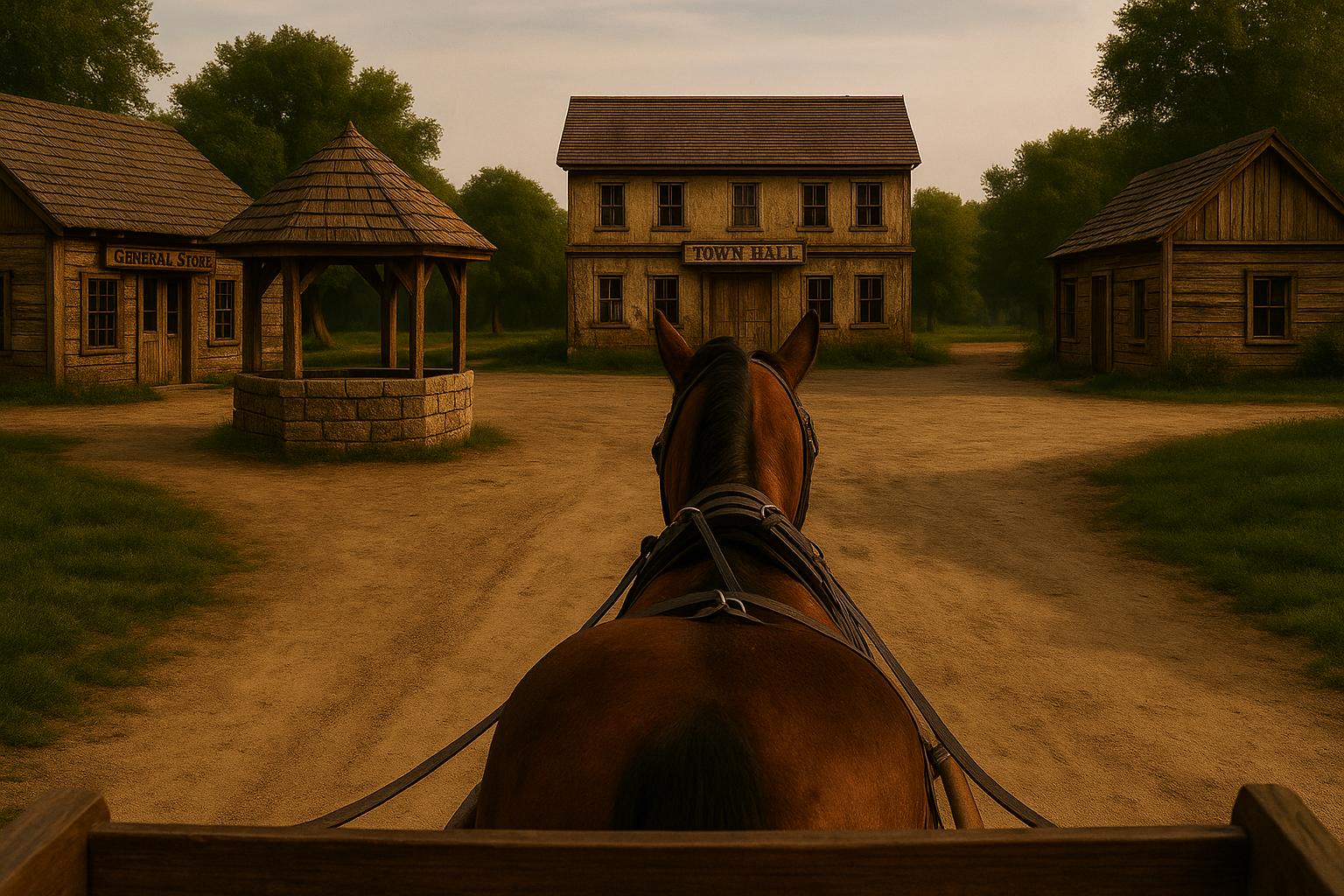
Type: Central Gathering Point
Location: Directly between the Town Hall, General Store, and Healer’s Cottage
Description:
The town square isn’t much of a square, it’s more of a gently trampled circle where the village paths converge like old memories. At its center, the well stands sturdy and functional, its stones worn smooth by years of use. On any given day, it might host buckets, conversation, a tied-off cart, or someone just passing through. It’s the kind of place that’s always part of something, even when nothing’s happening.
Around it, the pulse of Summervale beats steady. The Town Hall looms modest but proud across the way, with the General Store just to the left and the Healer’s Cottage nestled along the right path. It’s the first place newcomers really notice after crossing the bridge and go past the Millwrights and Sawmill but it's last place many locals pass through on their way home.
In Chapter 3, the well becomes more than just a landmark. Thalia pauses there briefly after errands and some surprizing news about her mother. Her gaze distant, her thoughts on a person she thought she knew. She doesn’t say much, but that’s always been her way. Sometimes, stillness tells you more than a conversation ever could.
Novel Insight: The town square marks a quiet emotional checkpoint for Thalia in Chapter 3. While the moment itself is brief, its placement speaks volumes, halfway between duty, memory, and the road ahead. It also subtly anchors readers spatially between the most central locations in Summervale.
General Store
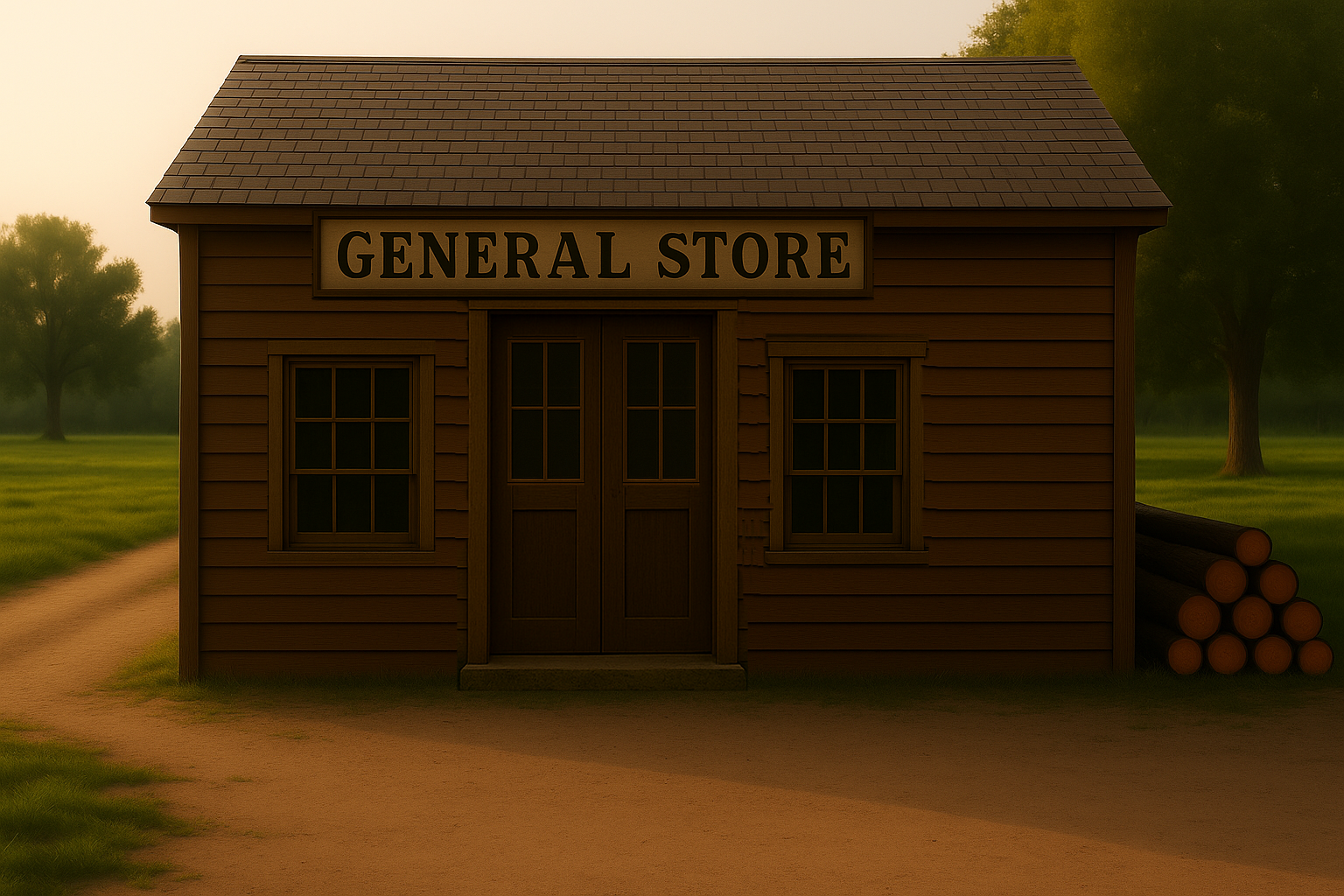
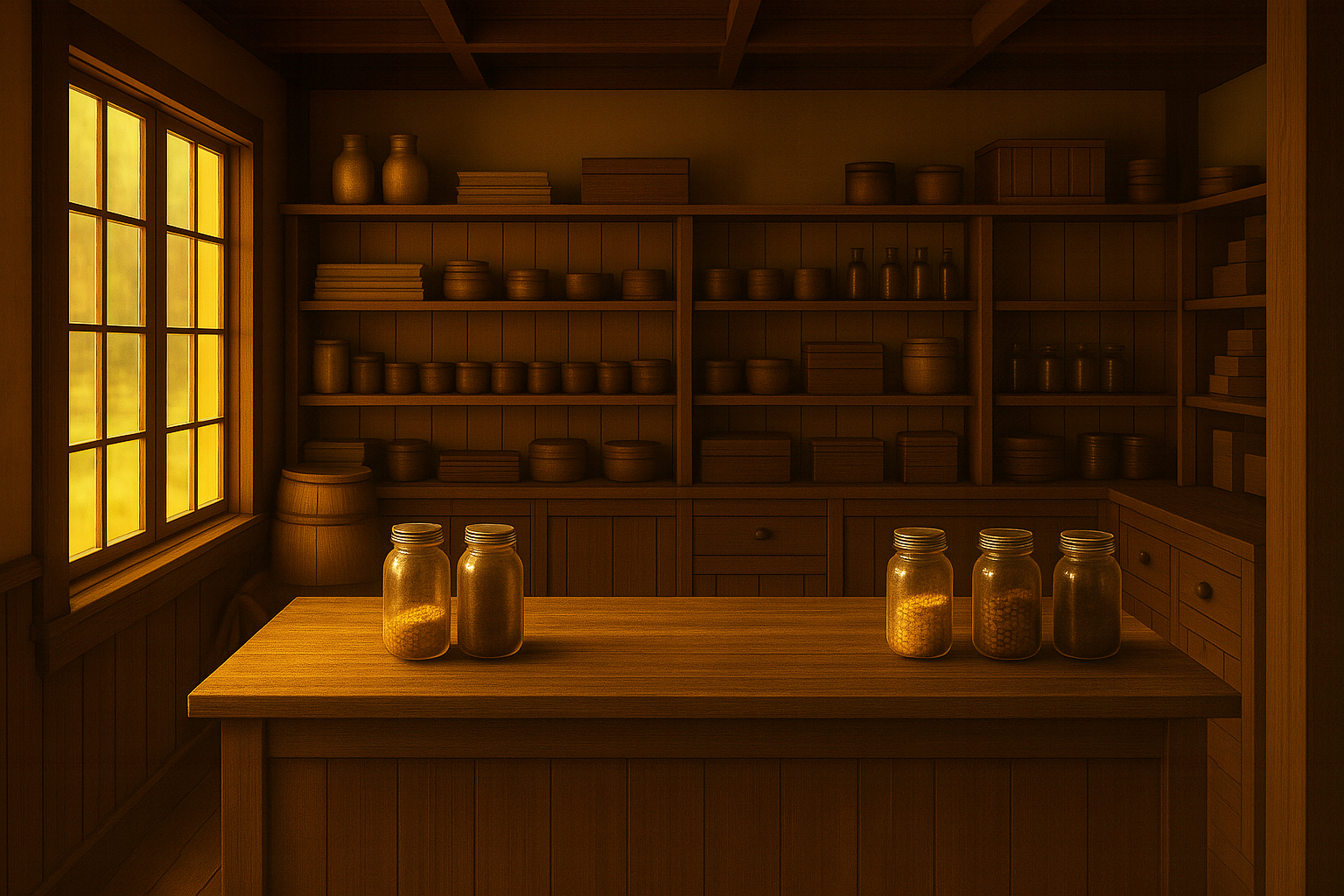

Type: Supply Hub and Mercantile
Location: Next to the Town Hall and the well
Description:
A modest, timeworn shop tucked near the town well, Summervale’s General Store is run by Lister Dunn, an old trapper with a practical streak and a dry sense of humor. Inside, the air smells of dried herbs and pinewood, and the shelves are stacked with jars, cloth bolts, buttons, and trail supplies. The bell over the door gives a tired jingle that somehow fits the place perfectly.
Thalia visits here early in the story to pick up essentials. Later, Stellan stops by on his way out of town, where a brief exchange with Lister speaks louder than any grand farewell. The store isn’t flashy, but it serves as a quiet cornerstone of the village, a place where the weight of the world slows down just long enough for you to catch your breath.
Novel Insight: Though the general store plays a small role in the story, its scenes offer subtle moments of character reflection and relationship dynamics. Lister's understated presence and the store’s unchanging nature provide contrast to the upheaval Stellan experiences elsewhere in Summervale.
🍺 The Hornet’s Nest Tavern
Located on the northeast side of Summervale near the Stables and across from the Hunter's Lodge, the Hornet’s Nest Tavern serves as the town’s unofficial gathering hall, gossip mill, and emotional release valve. Owned by Hornsby (known as "Captain Hornet") and his wife Rachel, it’s a place where the hearth is always warm, the drinks are almost affordable, and someone is probably arguing over who won last night’s dice match.
The tavern is staffed by their grown children: the dependable (and perpetually annoyed) Stephanie, and her charmingly useless brother Derek, who treats work like a stealth mission he’s trying to fail. Regulars include Lexi, Tabitha, and now Sam, though everyone in town has found themselves in the Hornet’s glow at one time or another, whether to celebrate, sulk, or recover from a Wretch encounter.
From early deliveries of grain by Stellan in Chapter 2 to Thalia’s infamous drinking contest in Chapter 3, the Hornet’s Nest plays a background role in the narrative, but never without impact. Even the most reluctant characters feel its pull. And Uncle Carl? He’s always there. Somewhere. Watching the lanterns. Talking to shadows.
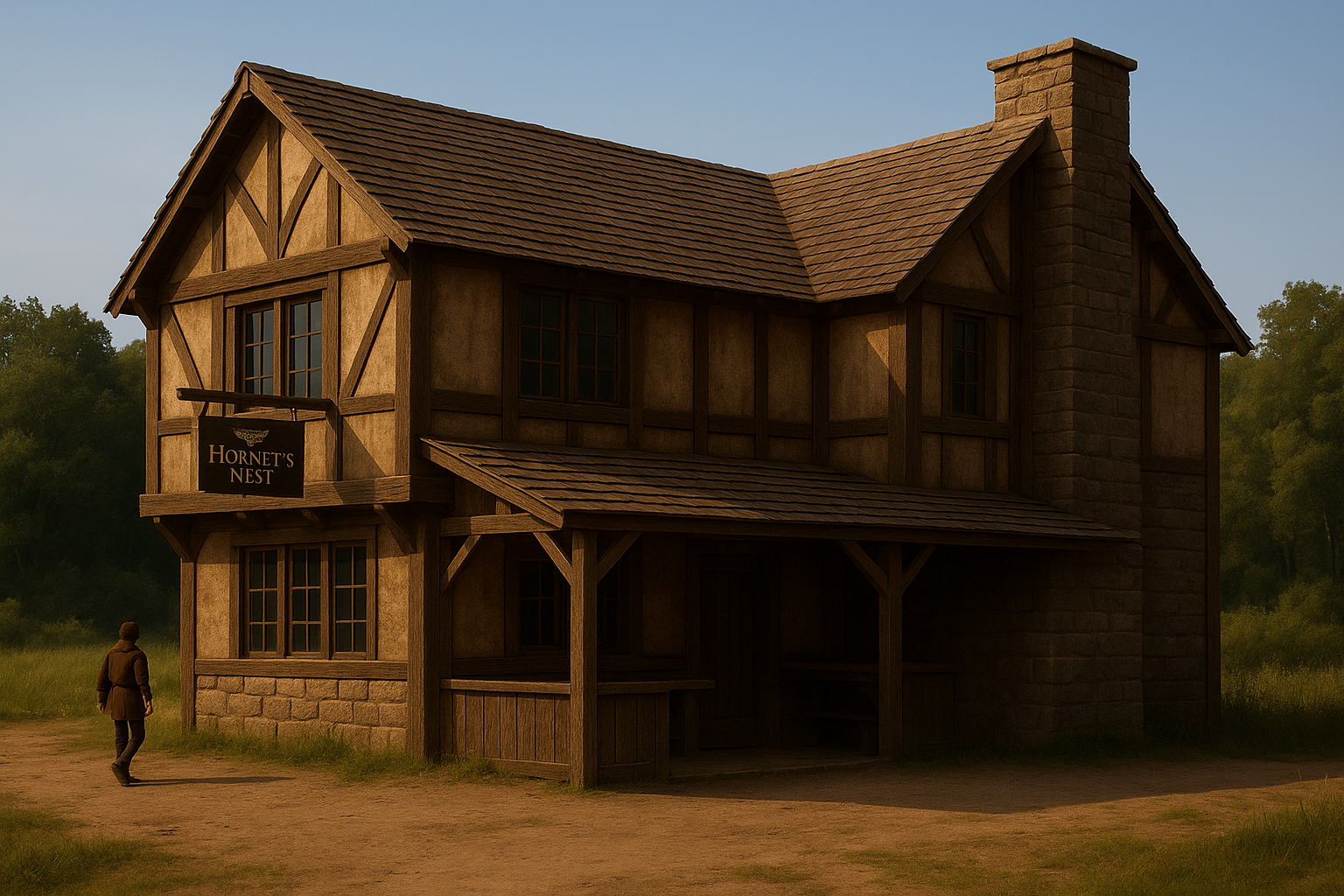
Exterior — Day: The tavern’s timber frame and wide porch make it one of the most recognizable buildings in town. It's where Stellan parks the cart for deliveries and where locals often gather before even setting foot inside.
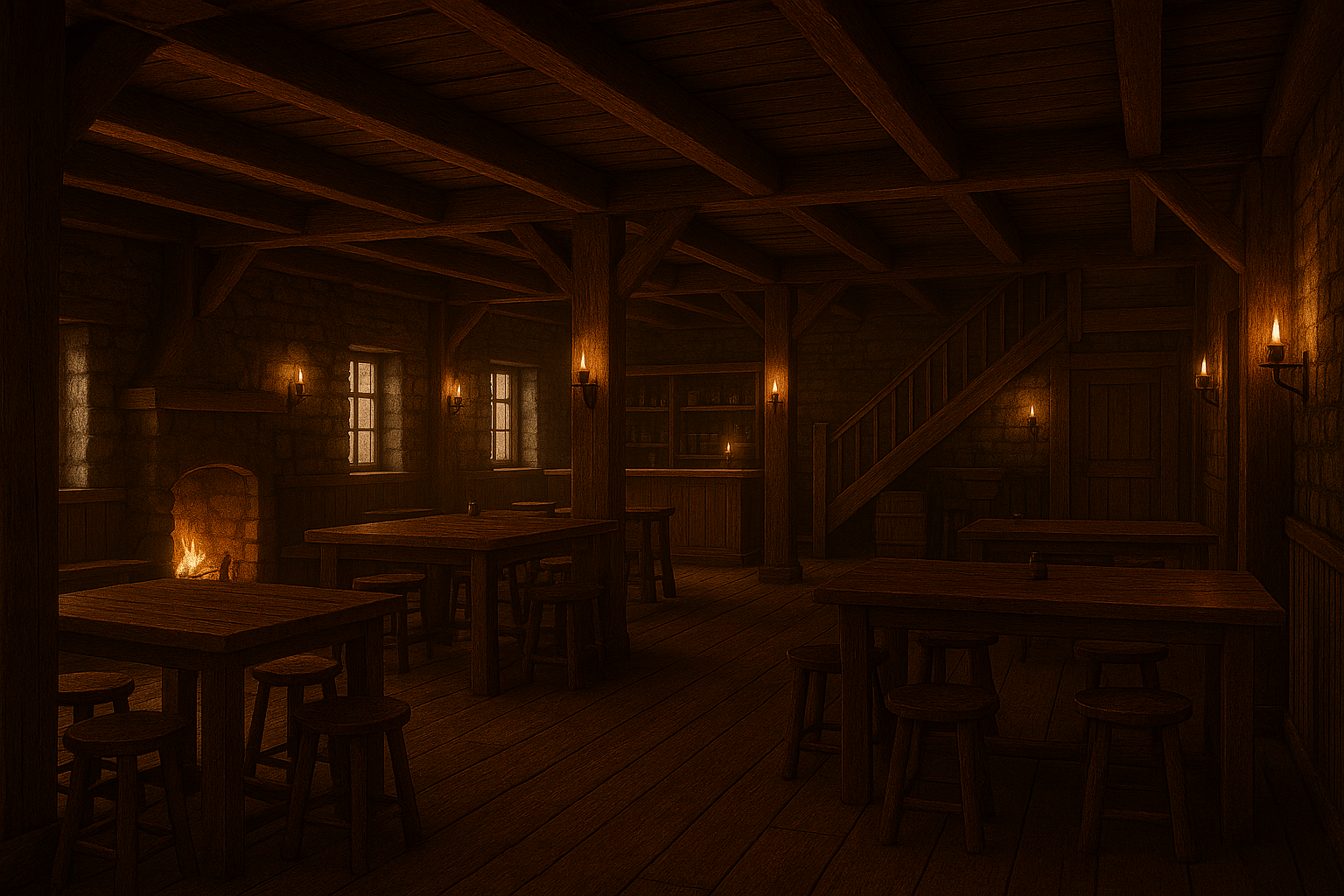
Interior — Day: Mismatched tables, flickering lanterns, and a fireplace that never quite dies down. The Hornet’s Nest is cozy, chaotic, and full of stories. You can almost hear Stephanie yelling from behind the bar and Derek pretending not to.
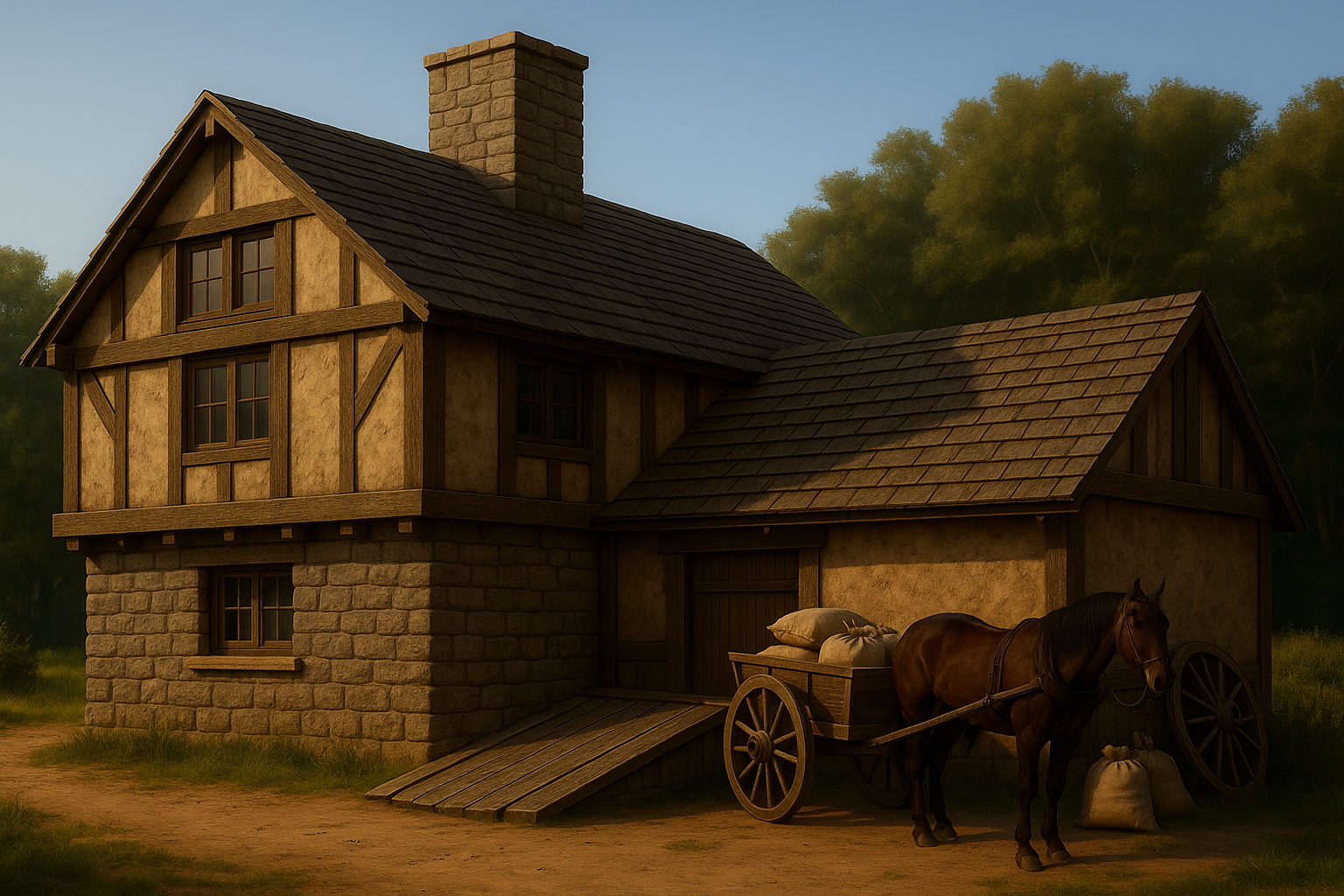
Rear View: The back of the tavern houses delivery ramps, a cellar entrance, and the spot where Derek’s been “moving crates” for three hours. It’s also where Stellan unloads grain and flour in Chapter 2 while dodging conversation about cider debt.

Night Crowd: On livelier nights, the tavern fills with laughter, spilled ale, and regret. Lexi, Tabitha, and Sam are seen here during Thalia’s infamous drinking contest, a moment that starts with fun and ends in scolding, exile, and one broken stool.
“You smell like ghosts and cow dung. One’s from the past, the other’s from your boots. Can’t tell which is worse.”
— Uncle Carl, Chapter 3

